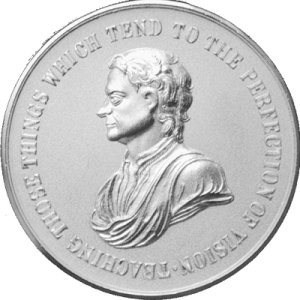05 Feb NEWTON MEDAL 2020

NEWTON MEDAL LECTURE 2020
About every two years the Colour Group awards its Newton Medal to a distinguished worker in the field of colour science, on the occasion of his or her delivery of The Newton Lecture.
This year, the Newton Medal will be awarded to Professor Ming Ronnier Luo in recognition of his outstanding contribution to Colour research and technology.
The Newton Lecture and Medal will be presented at 4pm on Wednesday 5th February at City University: R101, Franklin Building, 124 Goswell Road, ECV1 7DP
Prof Luo will be giving his lecture The Holy Grail of Colour Science (abstract below)
We look forward to seeing you there!
Tickets, also entitling you to refreshments after the lecture, are nearly sold out, any further admission will only be possible if current bookings are cancelled as a Waitlist is operating. If you have a ticket but do not intend to cattend, please go to Eventbrite and cancel your ticket so others can attend.

Professor Ming Ronnier Luo
Over the past 35 years Prof Luo has made an exceptional contribution to colour science and colour technology in both academia and industry. Major contributions to colour science include significant advances in colour-difference evaluation, colour-appearance modelling, colour emotion and harmony understanding and prediction, and lighting quality estimation. His mission has always been one of international dissemination of colour expertise.
From 2004 to 2015 he was Professor of Colour Science at the University of Leeds, UK where he is still a visiting professor. He has created new colour and appearance postgraduate departments at universities in China and Taiwan, and currently holds a full professorship at the University of Zhejiang. He has successfully supervised 49 PhD students and has taught colour science courses to over 500 masters students. Prof Luo has been much involved with the work of the International Commission on Illumination (CIE), the world authority for the standardisation and specification of colour and lighting, until recently holding the post of Vice President (Publications).
Prof Luo has always worked closely with industry and is author of 19 patents within areas of colour technology. Many of his new technologies have become successful industrial products, in collaboration with major international companies such as AkzoNobel, J&P Coats, Hewlett Packard, LG Displays, Philips Industries, Samsung, Unilever, and VeriVide. Prof Luo is currently the editor-in-chief of the Encyclopaedia of Colour Science and Technology. He is also co-editor of two books on colour imaging and digital media and has co-authored over 650 refereed journal and conference papers.
The Holy Grail of Colour Science
Prof Luo will be talking about his 40-year journey in colour science with an overview of the development of colour science in four stages: 1) colour specification, 2) colour difference evaluation, 3) colour appearance modelling, 4) comprehensive colour model.
In stages 2 and 3 he will be discussing the production of two visual datasets, BFD and LUTCHI for colour difference and colour appearance, respectively and their use in development of CIE recommended CIEDE2000 and CIECAM02, respectively. The models have been widely used in many applications, such as colour quality metrics for the LED lighting industry, colour inconstancy index and colour fastness scales for the supply chain industry as well as colour design applications.
Stage 4 involves the new developments, such as new UCS for HDR, incomplete chromatic adaptation, 2D colour appearance scales, simultaneous colour contrast. The new imaging applications include HDR operator, gamut mapping, image enhancement, etc. Another is to do with Total Appearance Specification to go beyond colour dimension into gloss, translucency and texture. Stage4 should deliver a comprehensive colour appearance model, which can accurately estimate colour difference and colour appearance in various viewing conditions from mesopic to photopic vision, from highly chromatic to white lightings, across varying sizes of colour gamut and displays.
